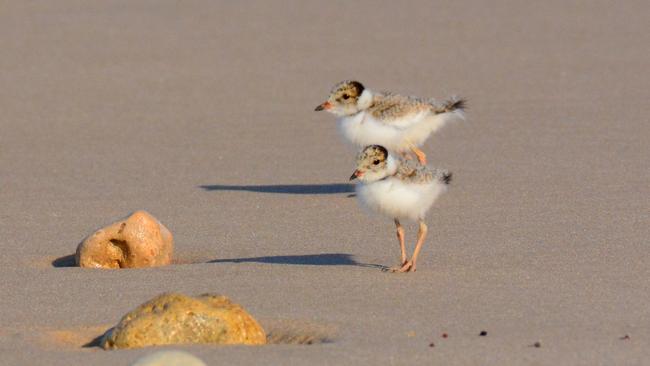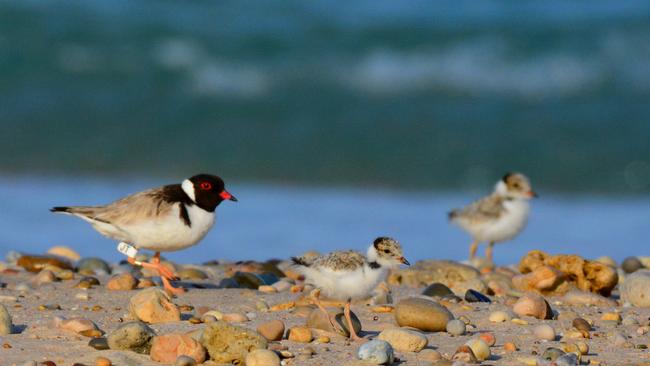Successful breeding season for Fleurieu Peninsula’s vulnerable hooded plovers
Some of the Fleurieu Peninsula’s cutest and most vulnerable coastal residents have had a successful breeding season, with 17 hooded plover chicks ready to fly the nest.

South
Don't miss out on the headlines from South . Followed categories will be added to My News.
- Share your message of thanks to our everyday heroes
- How to get the most out of your Advertiser digital subscription
The Fleurieu’s vulnerable hooded plovers have experienced one of their most successful breeding seasons in a decade.
With 17 chicks reaching their first flights, this season marks the third highest number of chicks to fledge in the past 10 years and just two less fledglings than the best season in 2015-16.
While the beaches at Ochre Cove, Seacliff, Tunkalilla and Basham’s Beach hosted the most success this season, even metro beaches as far north as Semaphore have been home to some plover pairs.
“Over the last few years, with the success of some breeding pairs on the Fleurieu, these ‘hoodies’ from the south appear to be setting up territories on our metro beaches, like Hallett Cove, Seaford and this year even West Beach,” Adelaide & Mt Lofty Ranges NRM Board coast and marine manager Tony Flaherty said.

Life isn’t easy for the beach-nesting birds with weather, predators and even people and their pets causing high losses of eggs and chicks each season.
Local councils and volunteers monitor beaches and noted 33 nesting sites across the region this season.
“Our volunteers regularly check the beaches, raise awareness with beachgoers and help identify when and where birds are nesting,” Mr Flaherty said.
“They work with our coastal team, BirdLife Australia, and council staff to put up temporary signs and set up rope fences around nests to encourage beachgoers and their pets to give these feathered mums and dads some space.”
The south’s ‘hoodies’ are listed as a vulnerable species in South Australia.
But with a promising result from this year’s nesting season, Mr Flaherty hopes a decade of effort is starting to pay-off.
“Come August, the birds will pair up again,” he said.
“As the public learns to share the shores with plovers, and more dog owners ‘take the lead’ on the beach, we look forward to another good season ahead.”
